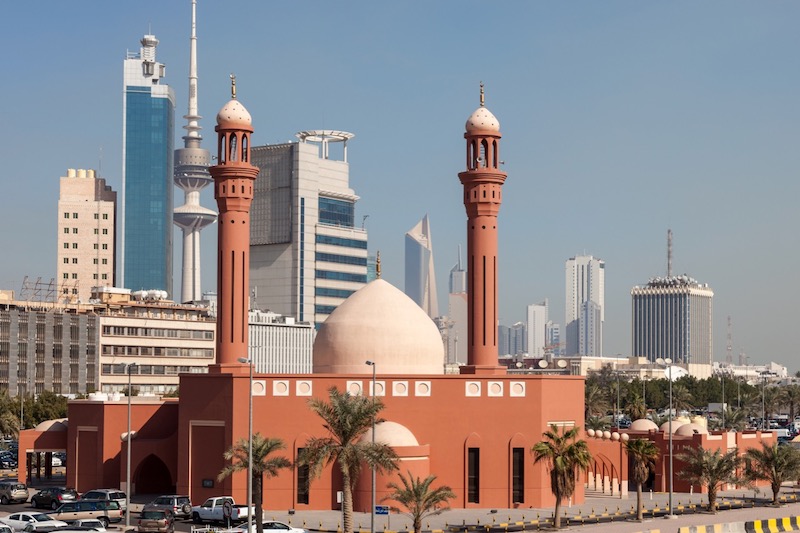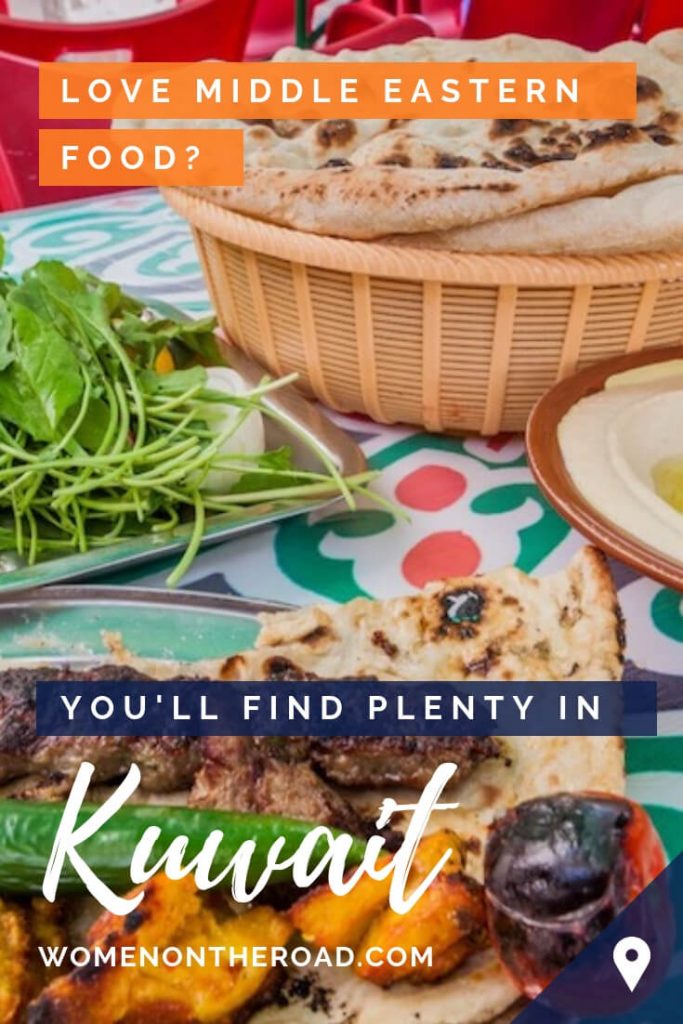Not surprisingly “Where is Kuwait?” is one of the first questions potential visitors ask about this country.
Kuwait sits at the tip of the Persian Gulf and borders with Iraq and Saudi Arabia, a geographically small country with a population of around 4.5 million, of whom some 70% are foreign workers. A welcoming country with a long and rich history, it is one of the most progressive in terms of women’s rights in the Gulf region.
Kuwait isn’t necessarily at the top of everyone’s bucket list – most people who hear the name Kuwait think of oil or war.
Yet Kuwait has a rich and diverse history. In the 19th and early 20th centuries, it was an important port, boat building and pearling center.

Once known as the ‘Marseille of the Persian Gulf’, it was a thriving cosmopolitan place. Kuwait’s trading wealth declined during the Great Depression when demand for goods and pearls fell, combined with trade blockades. But those ill fortunes revived with a vengeance with the discovery of oil, turning the country into

Iraq’s invasion of Kuwait in 1990 followed an oil dispute between Kuwait and its much larger neighbour: it was quick and came as a surprise, as Kuwait had supported Iraq during the Iran-Iraq war.
Nearly every family lost at least one member during the war, which had a lasting impact on the country. Almost half the population fled and it took the second Iraq war launched from Kuwait in 2003 and the subsequent death of Saddam Hussein in 2006 before people felt they could rebuild.
VISIT KUWAIT TO EXPERIENCE AN OFFBEAT DESTINATION
With its gleaming towers, five-star hotels and high-end shopping malls, it is difficult to imagine Iraqi tanks once roamed the streets although if you look carefully, you’ll still see a few bullet holes on older buildings.
A younger generation of Kuwaitis have turned the city into an urban hub of boutique restaurants and designer shopping areas, but that’s not to say there isn’t plenty of culture and history to discover, not to mention the striking skyline and sunsets.
That doesn’t mean there is no poverty in Kuwait – most of it is concentrated among foreign workers, who are often underpaid or living in difficult circumstances, having possibly been dismissed from their jobs but too poor to leave.
IS KUWAIT SAFE FOR WOMEN?
Kuwait is perfectly safe for solo
Beyond expat neighborhoods, however, women on their own will receive stares – simply because they are female.
A common ploy is to approach women driving cars and slip a mobile number through a window.
Kuwait is very liberal in terms of clothing
It is a good idea to always have a pashmina or scarf handy – you never know when you may feel the need to cover up more modestly. Indoor air-conditioning can be brutal and an extra layer will come in handy; plus, winters can be surprisingly cool.
When asking “Is Kuwait dangerous?”, you’ll undoubtedly be advised to avoid Hawally or Kuwait City at night. While safety itself is not an issue, foreign men (single or living far from their families) hang about in groups and may stare uncomfortably.
THINGS TO DO IN KUWAIT
While the country may be modest in size, there is plenty to do and see in Kuwait!
Grand Mosque
Every country in the region has a grand mosque and the one in Kuwait is splendid and welcoming, with beautiful architecture – a perfect venue for those who want to experience Islamic culture. Free guided tours are available through the
Kuwait Towers
Located in downtown Kuwait City right next to the gulf, these water towers were inaugurated in 1979 and are a piece of Kuwait architectural history, as well as a symbol of the country. They suffered substantial damage during the Iraq-Kuwait war and their renovation and re-opening was a moment of national pride.
Covered in blue, green and grey metal discs, you can access the revolving platform for a panoramic view of the city along the coast – it takes 30 minutes for the upper tower to turn 360 degrees, and you can eat while it revolves.
The best time to experience the towers is on a clear day, at sunset, as the call to prayer reverberates across the city.
Sheikh Jaber Al-Ahmad Cultural Center
This is the largest cultural center and opera house in the Middle East, a platform for educational and cultural exchange. It has hosted a variety of shows with noted celebrities from Sting to The Illusionist. In gardens within the grounds, fountains perform to music, and you can watch from the selection of cafés and restaurants that overlook them.
Sheikh Abdullah Al-Salem Cultural Center
This is the world’s largest museum complex and its 18 hectares are made up of the Natural History Museum, Science Museum, Space Museum, Arabic Islamic Science Museum, Fine Arts Center and the external spaces known as the Public Realm.
Bait Al Othman Museum
This excellent museum depicts Kuwait through the years, from pre-oil days to the present, with plenty of historical items and antiques.
Mirror House
This is one of Kuwait’s iconic attractions, a house completely covered in mirror mosaics, inside and out. The Mirror House can be visited by appointment only as it is a private home and tours are conducted by a member of the Qattan family. The Lidia al-Qattan, the Italian-born artist who created the house’s unique appearance, got the idea when her young daughter broke a mirror. She started by decorating a small cabinet, but when her husband
Al Qurain Martyrs Museum
This moving war museum in the Al-Qarain district is located in the building where Kuwaiti resistance fighters took their last stand against the Iraq invasion forces. The building is of historical importance to Kuwait and worth a visit, especially if you are interested in what happened during the war.
Sadu House
Sadu House is a historic home that has been turned into a small museum about Bedouin life in the desert, in particular the textile and weaving tradition in Kuwait. Ideal for a glimpse into Bedouin life, with activities, workshops and talks.
Camel racing in Kuwait
You’ll probably never see anything like this again: camel racing with a remote-controlled jockey! Every Saturday from November to March, the races take place, with the mechanical jockeys controlled from a vehicle hurtling along the dirt track alongside the camel track, a welcome replacement for the child jockeys who were once used. The entire event is quite exciting to watch, with each camel has its own vehicle. (You can see them in action on this Youtube video.)
The outdoors in Kuwait City
A favorite pastime is to take a boat trip from which you can gaze at the skyline from the sea (you can catch boat at the marina next to Sultan Restaurant).
DAY TRIPS FROM KUWAIT: TOURISM BEYOND THE CITY
A popular
Another popular day trip is to the desert, where locals often go camping and a few agencies have started offering short tours.

WHAT TO EAT IN KUWAIT
Kuwaiti food is largely similar to what you’ll find elsewhere in the region, and you’ll find everything from local street food to five-star luxury to – if you’re really stuck – a Macdonald’s on nearly every corner. And, most people deliver.
A standard staple is shawarma, a shaved meat wrap loved by Kuwaitis. You’ll find hundreds scattered throughout Kuwait City and you’ll find a good one at the back of Marina Mall. Falafel, too, is another great staple. Hamour is a local fish and cooked in a variety of ways.
Kuwait food and that of the other middle eastern countries is very similar and much of it is strongly influenced by Lebanese cuisine. A great drink is lemon with mint, delicious and freshly made.
Freij Swaileh is one of the top Kuwaiti restaurants for Kuwaiti food – you’ll sit on the floor and eat machboos (meat with rice) with your hands. Babel is a famous Lebanese restaurant on the Gulf Road in Salmiya, with fabulous food – tabbouleh, mouttabal and grilled meat – and at least as fabulous a view. Al Boom specializes in steak and seafood and while the food is great, it is the location that makes this place a unique experience: it is located inside a traditional Arabic dhow. Marouj is a relatively new concept in Kuwait – an open-air food court. Located off the 6th Ring Road next to 360 Mall, on the way to the airport, it is home to some fantastic restaurants.

SHOPPING IN KUWAIT
For a taste of traditional shopping, head to Souq Mubarakiya, Kuwait’s old
In November and December, several Christmas markets offer Arabian-themed gifts and Christmas decorations, including camels to hang on your Christmas tree.
Not everyone wants to go to a mall while on holiday but if you want to a taste of modern culture in Kuwait, then the mall is where you’ll find it. That’s where local people will be.
Kuwait’s biggest shopping mall is The Avenues, with styles from The Souk, a traditional marketplace, to high-end designer shops, not to mention restaurants from Kuwaiti cuisine to a Cheesecake Factory. A smaller one is
While there are some traditional handicrafts, most souvenirs are of a mundane kind – salt and pepper shakers shaped like a man in traditional dress and women in a veil, or little camels made from camel leather, Arabian style boxes and prayer beads. You can even leave with your own copy of the Kuwait Towers or fridge magnets!
*Amanda Settle is a travel writer and blogger who spent several years living in Kuwait.
KUWAIT TRAVEL RESOURCES
Visas for Kuwait
The Kuwait visa situation is changing. Until recently, just about everyone had to apply for a visa through a Kuwaiti embassy. Now, visas for
Best time to visit Kuwait
There’s no avoiding it – Kuwait is hot, especially at certain times of the year. The best way to avoid the extreme heat is to visit between October and April, when the milder temperatures allow you to explore the country rather than lie about in a heat-induced stupor.
A few basic customs
You won’t find pork or alcohol in Kuwait as they are banned by law. Drunken behavior is also an offence so even if you are offered an alcoholic drink, be wary.
Carry your passport at all times. Police in search of illegal immigrants often randomly check vehicles but you have nothing to worry about – just make sure you have your ID with you.
Cheap flights to Kuwait
Well…there aren’t many. It’s not a highly trafficked destination so yes, you’ll have to pay a bit of a premium to get there. Your best bet is to use a flight comparison engine to get the cheapest prices. North Americans get a bit of a break – it costs about the same to fly to Kuwait from New York as it does from London!
Hotels in Kuwait City tend to be expensive; booking.com has a range that includes a few budget options.
SHOP THIS POST ON AMAZON
Guest Contribution by Amanda Settle.
PIN THESE PICTURES AND SAVE FOR LATER!







